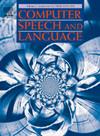定制设计的视听语音识别模型使用Branchformers
IF 3.4
3区 计算机科学
Q2 COMPUTER SCIENCE, ARTIFICIAL INTELLIGENCE
引用次数: 0
摘要
视听语音识别(AVSR)的最新进展在该领域取得了前所未有的成就,提高了这类系统在不利、嘈杂环境中的鲁棒性。在大多数情况下,这个任务是通过设计由两个独立编码器组成的模型来解决的,每个编码器专门用于特定的模态。然而,虽然最近的工作已经探索了统一的视听编码器,但确定最佳的跨模态架构仍然是一个持续的挑战。此外,这种方法通常依赖于包含大量参数和高计算成本训练过程的模型。在本文中,我们旨在通过引入一种新的视听框架来弥补这一研究空白。据我们所知,我们提出的方法是在设计参数高效的AVSR系统时,首次尝试利用编码器架构(如Branchformer)提供的灵活性和可解释性。更精确地说,提出的框架包括两个步骤:首先,估计音频和视频系统,然后根据模态特定模型提供的层级分支分数设计定制的视听统一编码器。在涵盖多种数据条件和场景的英语和西班牙语AVSR基准上进行的大量实验证明了我们提出的方法的有效性。即使在中等规模的数据上进行训练,我们的模型在英语方面也达到了约2.5%的竞争性单词错误率(WER),超过了西班牙语的现有方法,建立了一个平均WER约为9.1%的新基准。这些结果反映了我们定制的AVSR系统如何能够达到最先进的识别率,同时显着降低了模型的复杂性。代码和预训练模型可在https://github.com/david-gimeno/tailored-avsr上获得。本文章由计算机程序翻译,如有差异,请以英文原文为准。
Tailored design of Audio–Visual Speech Recognition models using Branchformers
Recent advances in Audio–Visual Speech Recognition (AVSR) have led to unprecedented achievements in the field, improving the robustness of this type of system in adverse, noisy environments. In most cases, this task has been addressed through the design of models composed of two independent encoders, each dedicated to a specific modality. However, while recent works have explored unified audio–visual encoders, determining the optimal cross-modal architecture remains an ongoing challenge. Furthermore, such approaches often rely on models comprising vast amounts of parameters and high computational cost training processes. In this paper, we aim to bridge this research gap by introducing a novel audio–visual framework. Our proposed method constitutes, to the best of our knowledge, the first attempt to harness the flexibility and interpretability offered by encoder architectures, such as the Branchformer, in the design of parameter-efficient AVSR systems. To be more precise, the proposed framework consists of two steps: first, estimating audio- and video-only systems, and then designing a tailored audio–visual unified encoder based on the layer-level branch scores provided by the modality-specific models. Extensive experiments on English and Spanish AVSR benchmarks covering multiple data conditions and scenarios demonstrated the effectiveness of our proposed method. Even when trained on a moderate scale of data, our models achieve competitive word error rates (WER) of approximately 2.5% for English and surpass existing approaches for Spanish, establishing a new benchmark with an average WER of around 9.1%. These results reflect how our tailored AVSR system is able to reach state-of-the-art recognition rates while significantly reducing the model complexity w.r.t. the prevalent approach in the field. Code and pre-trained models are available at https://github.com/david-gimeno/tailored-avsr.
求助全文
通过发布文献求助,成功后即可免费获取论文全文。
去求助
来源期刊

Computer Speech and Language
工程技术-计算机:人工智能
CiteScore
11.30
自引率
4.70%
发文量
80
审稿时长
22.9 weeks
期刊介绍:
Computer Speech & Language publishes reports of original research related to the recognition, understanding, production, coding and mining of speech and language.
The speech and language sciences have a long history, but it is only relatively recently that large-scale implementation of and experimentation with complex models of speech and language processing has become feasible. Such research is often carried out somewhat separately by practitioners of artificial intelligence, computer science, electronic engineering, information retrieval, linguistics, phonetics, or psychology.
 求助内容:
求助内容: 应助结果提醒方式:
应助结果提醒方式:


